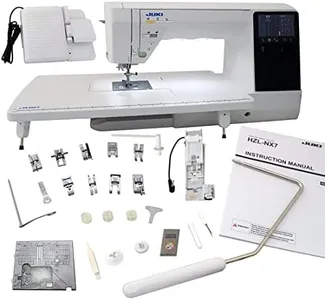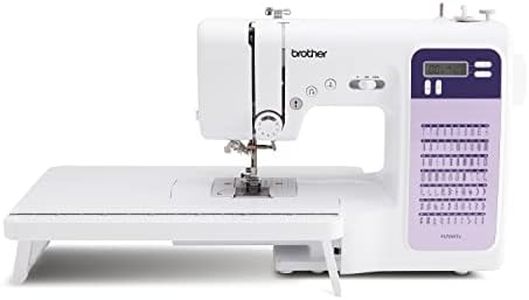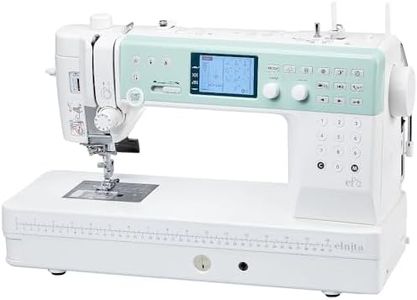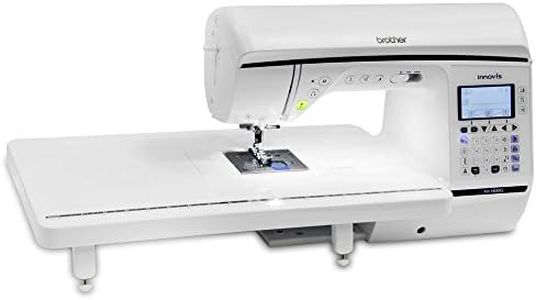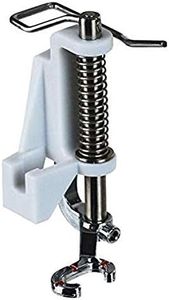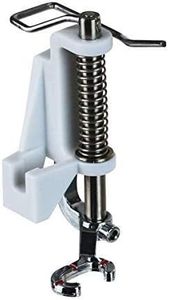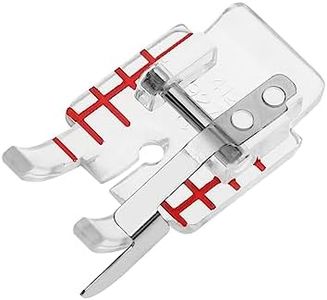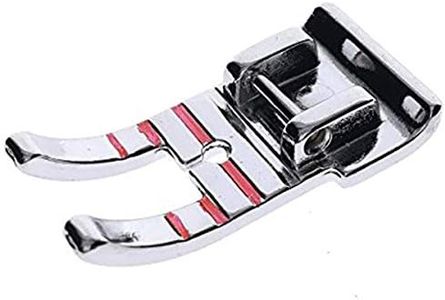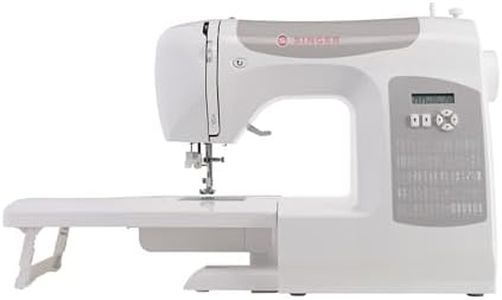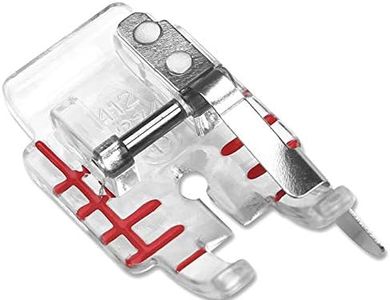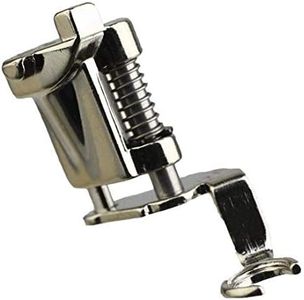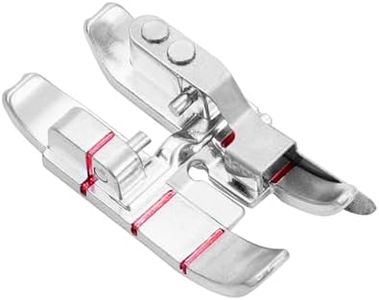We Use CookiesWe use cookies to enhance the security, performance,
functionality and for analytical and promotional activities. By continuing to browse this site you
are agreeing to our privacy policy
10 Best Quilting Machines
From leading brands and best sellers available on the web.Buying Guide for the Best Quilting Machines
Choosing the best quilting machine depends on your quilting goals, the types of projects you want to tackle, and how much space and time you are willing to dedicate to quilting. Start by considering how often you plan to quilt, whether you focus on small or large quilts, and if features like automation or computerized functions are important for your convenience. Assess your comfort with technology and your sewing experience – simple machines may be plenty for beginners, while experienced quilters can benefit from advanced features. Test machines in person if possible, as comfort and ease of use are key. Aim for a model that supports your current skill level and offers room to grow as you develop your quilting hobby.Throat SpaceThroat space is the distance between the needle and the right side of the machine. This is important because it determines how much room you have to maneuver your quilt while sewing, especially when working with larger projects. Small throat spaces (under 8 inches) are fine for piecing small items or baby quilts, while mid-arm (8 to 12 inches) and long-arm (over 12 inches) machines provide the space needed for larger projects and free-motion quilting. If you're interested in making large bed quilts or doing detailed quilting designs, look for a machine with more throat space. For occasional quilters or those sticking to small projects, a more compact machine may be comfortable and sufficient.
Stitch OptionsStitch options refer to the variety and type of stitches a machine can create. Common stitches used in quilting include straight, zigzag, and decorative stitches. Basic machines may only offer a few stitches, which is fine for piecing and simple quilting, while more advanced models may have dozens or even hundreds of stitch patterns, including specialized quilting stitches. Think about whether you want to experiment with decorative quilting or keep things simple. Beginners can start with a machine that offers strong straight and zigzag stitches, while advanced users or those interested in embellishing quilts may prefer more stitch choices.
Feed SystemThe feed system moves fabric under the needle as you sew. Standard feed dogs are good for straight, even stitching, but for quilting, a 'dropped feed' or 'free-motion' capability lets you move the fabric in any direction for creative designs. Some machines come with a walking or even-feed foot, which helps evenly feed multiple fabric layers, preventing shifting – a big advantage in quilting. If you're eager to do free-motion quilting or work with heavy or layered fabrics, look for a drop feed option and compatible feet. If you're sticking to straight lines or piecing, any reliable feed system will do.
Speed ControlSpeed control allows you to adjust how fast the needle moves. This is important because quilting often requires precision, and sewing at slower speeds can help prevent mistakes, especially when stitching intricate designs. Models with adjustable speed let both beginners and experienced quilters find a comfortable stitching pace. For those who need more control during delicate quilting or for new users learning the process, machines with easy-to-adjust speed settings are helpful. If you find a constant speed suits your projects, this may be less important.
Frame CompatibilitySome quilting machines can be used on their own (tabletop style), while others are designed to work with quilting frames, which support and manage large quilts as you sew. Frames are more commonly used with long-arm or mid-arm machines for professional or very large projects. Consider whether you might want to use or add a frame – if so, make sure the machine is compatible. For traditional piecing and small quilting projects, frames aren't necessary. However, if you're planning to quilt large bedspreads or want professional results, frame compatibility could become a high priority.
Automatic FeaturesAutomatic features in quilting machines can include things like needle threaders, thread cutters, programmable patterns, and adjustable presser foot pressure. These features are designed to save time, reduce mistakes, and make quilting less physically demanding. If you value convenience and wish to streamline your sewing experience, look for models with more automatic options. For those who prefer a hands-on approach or want to keep things simple, manual machines may be perfectly adequate.
Build Quality and WeightBuild quality refers to how sturdy and durable the machine is. Heavier machines often have more metal parts, reducing vibration during quilting, which leads to smoother stitches. Lighter machines are easier to move, which is helpful if you attend quilting classes or need to store your machine after use. If you plan to quilt frequently or with heavy fabrics, a sturdy machine is preferable. If portability is important, prioritize a lighter machine but ensure it still feels solid in use.

